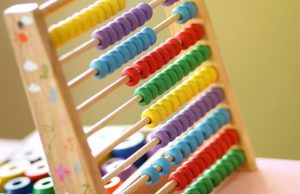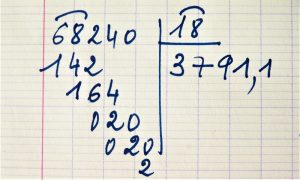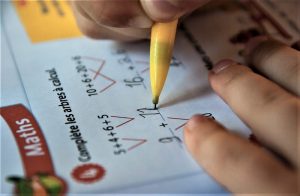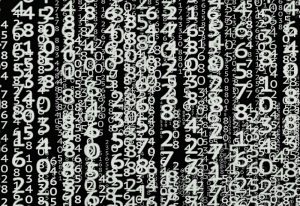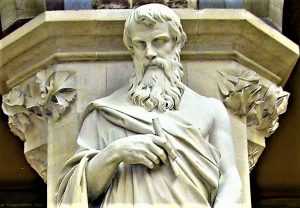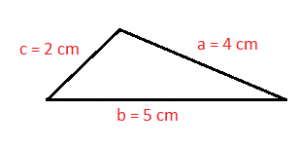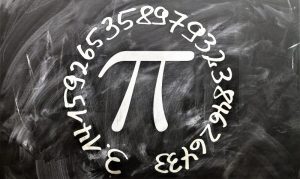Abacus
The abacus is a square-shaped instrument made of wood which consists of ten different wires or strings placed in parallel. Each of these strings has ten balls that have mobility. It is an instrument that helps people to perform simple calculations. It was a widely used instrument in antiquity, and was used to teach students simple mathematical operations, such as multiplying, dividing, adding, and subtracting. Some historians believe that the abacus was the first instrument created to perform calculations. Invention and technological innovation have relegated the use of the abacus and caused it to lose popularity in schools and homes, where it was previously used to educate children.
What is the abacus?
The abacus is an instrument made of wood that has a series of strings or wires placed in parallel and each string has ten beads or balls that have mobility. It is an instrument that helps us perform simple mathematical operations and a little algebra.
Etymology
The word abacus is a word that exists in several languages and has different etymological origins that until now are still much discussed. Abaco comes from Latin and is formed by the terms “abacus” and their respective plural, “abaci“. We can mention that, for example, in Greek language the term was used as “ἄβαξ” or abax and there was also a second Greek word which, applied to the term, “ἄβακoς” or abakos, meant flat surface or table. Besides these meanings, there was another possible origin and it was the Phoenician word of Hebrew origin אבק which in its modern meaning meant “dust“, and if we want to go deeper, the word was also used in Hebrew language, and was used to refer to grains, mainly food grains. Perhaps the most important terminology was used in the Latin language, which was written “calculus“, and it was this term that was used to make calculations with the abacus, were the first to make calculations in the history of mankind. There are many ways to say the word abacus, for example, in Chinese it is pronounced Suan Pan, in Japanese Soroban, in Korean Tschu Pan, in Hebrew Jeshboniá and in Russian Schoty, to mention some examples.
What is the abacus for?
Some scientific studies point out that the abacus causes a series of positive neural effects increasing the cognitive capacity since it activates with its use the right hemisphere, responsible for mathematical calculation tasks, helping with memory and natural intelligence in the same way. More recently, the use of the abacus has been shown to produce a number of changes in the grey matter and brain matter, helping to maintain integration and accelerate learning through training. It also helps us to solve arithmetic problems through calculation and memory, as long as the operations are done with simple numbers. Today, this ancient instrument is used as a type of didactic toy to teach mathematics in a simple way to children, as it functions as a multiplication table.
Characteristics of the abacus
- It’s made of wood or plastic.
- It has a series of ropes or wires where the balls are placed to count.
- It represents units, tens, hundreds, units of thousands, tens of thousands, hundreds of thousands, and so on.
- It has been considered the forerunner of the modern digital calculator.
How to use it?
It is a very simple instrument to use. Through small balls that can slide along a series of wires or strings that are attached to a frame usually wood but can also be plastic. These balls are responsible for representing the units, tens, hundreds, etc., and is used to perform basic mathematical activities such as addition, subtraction, division and multiplication, and although it seems incredible, can be used to find the square root of a number and the cubic root. It is also a useful tool for teaching children to count.
History
The abacus is a very old calculus tool, which has been adapted by a large number of cultures. Its origin is unknown, but it is known that in ancient times, people used materials to count, according to what has been historically discovered.
Probably their beginning was in flat stones with stones that could be moved to count. Some historians consider that the origin of the abacus is Chinese because it is the place where this instrument is more remarkable. It is also believed that the Dameros used the abacus in sand and rocks to perform arithmetic calculations. Many cultures have used the abacus over time and its use has been commented by different writers in Greece. Some evidences of the abacus have been found in archaeological excavations, in one of them was found an amphora that had drawings in where appeared a figure that represented a counter to make mathematical calculations, and the second, was a count board that represented the coin of the period.
How to cite this article?
Briceño V., Gabriela. (2019). Abacus. Recovered on 4 May, 2025, de Euston96: https://www.euston96.com/en/abacus/
